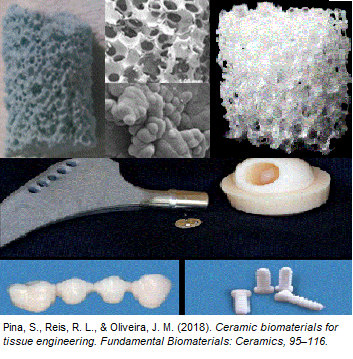TYPES OF BIOCERAMICS

TYPES OF IMPLANT-TISSUE RESPONSE AND TISSUE ATTACHMENT
There are four types of tissue response and four different means of attaching prostheses to the skeletal system.
TYPES OF IMPLANT-TISSUE RESPONSE;
1-) If the material is toxic, the surrounding tissue dies.
2-) If the material is nontoxic and biologically inactive (nearly inert), a fibrous tissue of variable thickness forms.
3-) If the material is nontoxic and biologically active (bioactive), an interfacial bond forms.
4-) If the material is nontoxic and dissolves, the surrounding tissue replaces it.
TYPES OF BIOCERAMIC TISSUE ATTACHMENT AND THEIR CLASSIFICATION;
1.Dense, nonporous, nearly inert ceramics attach by bone growth into surface irregularities by cementing the device into the tissues or by press-fitting into a defect (termed “morphological fixation”). FOR EXAMPLE; Al2O3 (single crystal and polycrystalline)
2.For porous inert implants, bone ingrowth occurs that mechanically attaches the bone to the material
(termed “biological fixation”). FOR EXAMPLE; Al2O3 (polycrystalline), Hydroxyapatite-coated porous metals
3.Dense, nonporous surface-reactive ceramics, glasses, and glass-ceramics attach directly by chemical
bonding with the bone (termed “bioactive fixation”). FOR EXAMPLE; Bioactive glasses, Bioactive glass-ceramics, Hydroxyapatite
4.Dense, nonporous (or porous) resorbable ceramics are designed to be slowly replaced by bone.
FOR EXAMPLE; Calcium sulfate (Plaster of Paris), Tricalcium phosphate, Calcium–phosphate salts
–
REFERENCE: B. D. Ratner, A. S. Hoffman, F. J. Schoen, and J. E. Lemons, “Biomaterials science: an introduction to materials in medicine”, Elsevier, ISBN: 978-0-12-374626-9, 2004.



